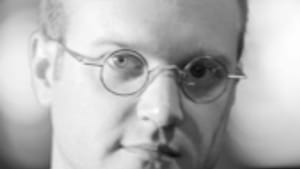Stay in the Loop
BSR publishes on a weekly schedule, with an email newsletter every Wednesday and Thursday morning. There’s no paywall, and subscribing is always free.
‘God's musicians come from Portugal'
Piffaro's "Portuguese Vespers'

Piffaro usually demonstrates a good ear for orchestration, but the Renaissance band erred for once when it emphasized sackbuts (early trombones) during the first part of its recreation of a Portuguese vespers at St. Mark's.
The sackbut normally adds a touch of color and warmth to a Renaissance ensemble. But in this case, the dominant brass sound seemed hard and failed to blend with the vocal choir.
The program didn't warm up until Piffaro introduced woodwinds, such as the recorders. At this point the instruments immediately began to blend with the voices, and the sackbuts assumed their customary place in the overall sonority.
Piffaro collaborated with the Choral Arts Society for this event, with the Choral Arts director, Matthew Glandorf as conductor. A few years ago, Glandorf presented an all-Bach vespers and included the traditional priestly chants in between Bach's settings. This time, Piffaro didn't try to create an exact replica of a festive Renaissance vespers devoted to the Virgin Mary, but the program did include the liturgical chants and followed the general pattern of the church service. Most of the major pieces consisted of hymns to the Virgin, set by various Portuguese composers, with texts taken from the psalms.
Aftermath of an earthquake
Portuguese music suffered a catastrophic setback in 1755 when the Lisbon earthquake destroyed the city's principal manuscript library. Ever since, Portuguese early music has been overshadowed by music from the rest of Europe, but scholars have pieced together some of the tradition from manuscripts stored elsewhere on the Iberian Peninsula. Piffaro's Portuguese concert in 2004 was one of the best concerts I've attended, and this one was a worthy successor, despite my complaints about excessive brassiness.
The program opened with a typical Piffaro touch, a traditional hymn sung by the female choristers from the back of the church, as if they were singing on the street. Rustic bagpipers took up the melody, inviting passersby to come to the vespers, and the company entered in a grand procession down the center aisle, singing an Alleluia by the 16th-Century composer Manuel Mendes.
Versatile musicians
Glandorf's 19-voice choir included some notable soprano voices, singing parts that were probably originally sung by boys. The orchestration, as always, reflected one of Piffaro's biggest strengths: the fact that all the musicians play several instruments. For this performance, they varied the accompaniments and instrumental interludes with a sonic kaleidoscope that included recorders, dulcians, bagpipes, shawns, sackbuts, guitar, harp and various types of percussion.
Christa Patten's harp contributed a lovely guitar-like interlude. A cornetto played by guest Kiri Tollaksen added the sound of that rare, beautiful cross between a trumpet and a recorder.
As always, the evening featured the smoothest, most beautifully integrated recorder ensembles you're going to hear anywhere— a judgment I'll stand by, even though I must admit that I haven't heard every recorder ensemble currently active on our planet.
A Piffaro specialty
Portuguese vespers included dance-like pieces in a popular style, and that gave Piffaro a valid reason to end both halves with another trademark specialty: exuberant, full-blast Renaissance dances featuring every instrumentalist and vocalist available for duty.
Both villancicos featured texts flavored with a good-humored nationalism. The first proclaimed, "God's musicians come from Portugal," and the second suggested that the Christ child might achieve the ultimate honor and become King of Portugal.
Both of these semi-secular pieces featured lengthy solos by chorister Heather Gardner, a spirited soprano with an exceptionally pure voice. Her drawn out "Ayyyyyyyyyyy Portugal!" after each verse of the first villancico was an event in itself.
The sackbut normally adds a touch of color and warmth to a Renaissance ensemble. But in this case, the dominant brass sound seemed hard and failed to blend with the vocal choir.
The program didn't warm up until Piffaro introduced woodwinds, such as the recorders. At this point the instruments immediately began to blend with the voices, and the sackbuts assumed their customary place in the overall sonority.
Piffaro collaborated with the Choral Arts Society for this event, with the Choral Arts director, Matthew Glandorf as conductor. A few years ago, Glandorf presented an all-Bach vespers and included the traditional priestly chants in between Bach's settings. This time, Piffaro didn't try to create an exact replica of a festive Renaissance vespers devoted to the Virgin Mary, but the program did include the liturgical chants and followed the general pattern of the church service. Most of the major pieces consisted of hymns to the Virgin, set by various Portuguese composers, with texts taken from the psalms.
Aftermath of an earthquake
Portuguese music suffered a catastrophic setback in 1755 when the Lisbon earthquake destroyed the city's principal manuscript library. Ever since, Portuguese early music has been overshadowed by music from the rest of Europe, but scholars have pieced together some of the tradition from manuscripts stored elsewhere on the Iberian Peninsula. Piffaro's Portuguese concert in 2004 was one of the best concerts I've attended, and this one was a worthy successor, despite my complaints about excessive brassiness.
The program opened with a typical Piffaro touch, a traditional hymn sung by the female choristers from the back of the church, as if they were singing on the street. Rustic bagpipers took up the melody, inviting passersby to come to the vespers, and the company entered in a grand procession down the center aisle, singing an Alleluia by the 16th-Century composer Manuel Mendes.
Versatile musicians
Glandorf's 19-voice choir included some notable soprano voices, singing parts that were probably originally sung by boys. The orchestration, as always, reflected one of Piffaro's biggest strengths: the fact that all the musicians play several instruments. For this performance, they varied the accompaniments and instrumental interludes with a sonic kaleidoscope that included recorders, dulcians, bagpipes, shawns, sackbuts, guitar, harp and various types of percussion.
Christa Patten's harp contributed a lovely guitar-like interlude. A cornetto played by guest Kiri Tollaksen added the sound of that rare, beautiful cross between a trumpet and a recorder.
As always, the evening featured the smoothest, most beautifully integrated recorder ensembles you're going to hear anywhere— a judgment I'll stand by, even though I must admit that I haven't heard every recorder ensemble currently active on our planet.
A Piffaro specialty
Portuguese vespers included dance-like pieces in a popular style, and that gave Piffaro a valid reason to end both halves with another trademark specialty: exuberant, full-blast Renaissance dances featuring every instrumentalist and vocalist available for duty.
Both villancicos featured texts flavored with a good-humored nationalism. The first proclaimed, "God's musicians come from Portugal," and the second suggested that the Christ child might achieve the ultimate honor and become King of Portugal.
Both of these semi-secular pieces featured lengthy solos by chorister Heather Gardner, a spirited soprano with an exceptionally pure voice. Her drawn out "Ayyyyyyyyyyy Portugal!" after each verse of the first villancico was an event in itself.
What, When, Where
Piffaro, “A Portuguese Advent Vespersâ€: Hymns, Psalms, Motets, Magnificats, Villancicos and other works by Fernandez, Mendes, Rebelo, Sao Jao, de Brito, Salaverde, Pinheiro, de Cruz, Martins, Coelho, Lesbio, and Melgas. Choral Arts Society members, choir. Matthew Glandorf, conductor. November 14, 2009 at St. Mark’s Church, 1625 Locust St. (215) 235-8469 or www.piffaro.org.
Sign up for our newsletter
All of the week's new articles, all in one place. Sign up for the free weekly BSR newsletters, and don't miss a conversation.

 Tom Purdom
Tom Purdom